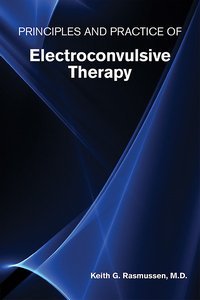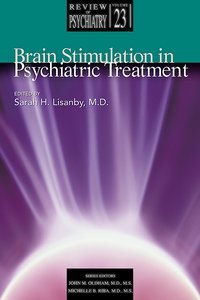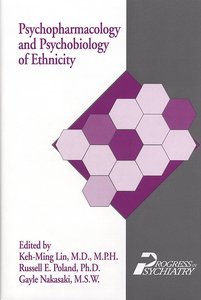Clinical Manual of Electroconvulsive Therapy
View Pricing
Description
Increasingly, electroconvulsive therapy (ECT) is recognized as a proven, effective, and even life-saving intervention in certain mood and thought disorders when other treatments have had little or no effect. Despite the proven efficacy and safety of this standard treatment in psychiatry, its availability is variable. Part of this disparity in access is related to misunderstanding by laypersons regarding the treatment and its potential adverse effects. Adequate education and training of psychiatrists and their support staff are essential to ensuring patients' access to this vital treatment tool. The authors of Clinical Manual of Electroconvulsive Therapy offer this expansive yet reader-friendly volume to help psychiatrists successfully incorporate ECT into their clinical practices. It is also a valuable resource for medical students and psychiatric residents, as well as experienced clinicians and researchers.
The book updates the 1985 original and 1998 second edition of Electroconvulsive Therapy: A Programmed Text, and provides readers with a scheduled approach to understanding the fundamental concepts of ECT while offering practical guidance for establishing and maintaining an ECT program. Topics include the history of ECT, indications for use, patient referral and evaluation, the basics of ECT, clinical applications, anesthetics and other medications, seizure monitoring and management, ictal motor and cardiovascular response, adverse effects, and maintenance ECT. Included are detailed descriptions of recent advances including ultra-brief pulse ECT, oxygenation, muscle relaxation, and other modifications that have made this very effective treatment much safer and more acceptable to patients.
Currently, it is estimated that more than 100,000 people receive ECT treatments each year in the U.S. Indications for use of ECT are for mood disorders such as major depressive disorder and mania, and thought disorders including schizophrenia and schizoaffective disorder. Indications for use in other psychiatric disorders and general medical disorders such as Parkinson's disease, which appears to respond especially well to ECT, are reviewed as well. This highly-readable manual is a must-have for the library of any clinician interested in or currently practicing ECT:
- Provides background information on the origins of psychiatric treatments preceding ECT, including efforts using hydrotherapy and insulin comas
- Includes an algorithm for the management of ECT seizure adequacy
- Discusses contraindications as well as the potential adverse effects of ECT, including cognitive changes and cardiovascular complications
- Provides specific information about ECT device manufacturers, reprintable patient information sheets, and a written informed consent form
This clinical manual comprehensively explores and explains the available knowledge regarding ECT—based on extensive research over the past 70 years—in order to help potential ECT clinicians make informed choices about the development and management of their ECT program.
Contents
- About the Authors
- Preface
- PART 1: Background
- Chapter 1. History of Electroconvulsive Therapy
- Chapter 2. Indications for Use
- Chapter 3. Patient Referral and Evaluation
- PART 2: Electrical Stimulus and Procedure
- Chapter 4. Basics
- Chapter 5. Clinical Applications
- Chapter 6. Anesthetics and Other Medications
- PART 3: Seizure Monitoring
- Chapter 7. Ictal Motor Response
- Chapter 8. Ictal Electroencephalographic Response
- Chapter 9. Cardiovascular Response
- PART 4: Treatment Course
- Chapter 10. Adverse Effects
- Chapter 11. Managing the ECT Seizure
- Chapter 12. Index ECT
- Chapter 13. Maintenance ECT
- Chapter 14. Step-by-Step Outline of ECT Administration
- Appendix A: Continuing Medical Education Activities
- Appendix B: Educational Materials
- Appendix C: Patient Information Sheet
- Appendix D: Sample ECT Consent Forms
- Index
About the Authors
Mehul V. Mankad, M.D., is Clinical Associate in Psychiatry and behavioral sciences at Duke University Medical Center and staff psychiatrist at Durham Veterans Affairs Medical Center in Durham, North Carolina.
John L. Beyer, M.D., is Assistant Professor of Psychiatry and Behavioral Sciences at Duke University Medical Center in Durham, North Carolina.
Richard D. Weiner, M.D., Ph.D., is Professor of Psychiatry and Behavioral Sciences at Duke University Medical Center and Chief of the Mental Health Service Line at Durham Veterans Affairs Medical Center in Durham, North Carolina.
Andrew D. Krystal, M.D., M.S., is Professor of Psychiatry and Behavioral Sciences at Duke University Medical Center in Durham, North Carolina.
Related Products
Carousel Control - items will scroll by tabbing through them, otherwise arrows can be used to scroll one item at a time






